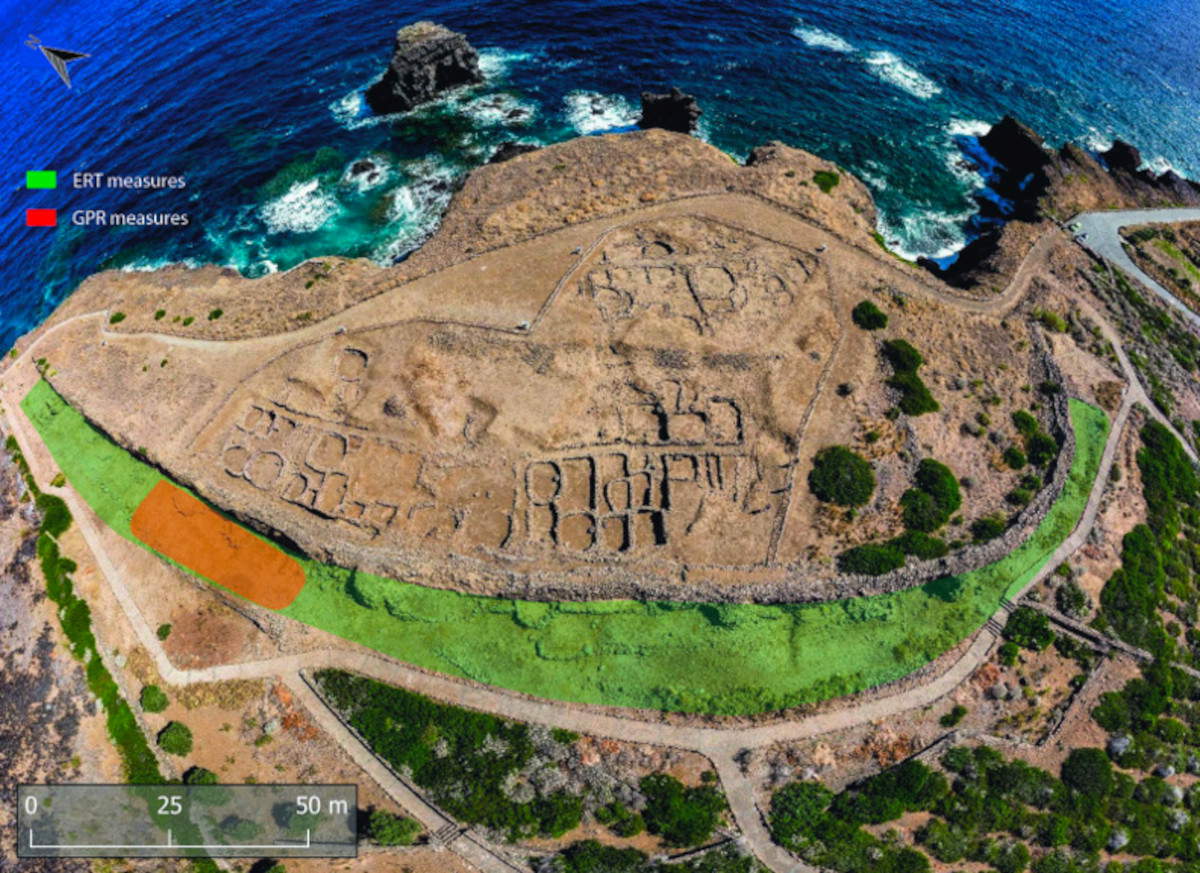Important discovery thanks to geophysical surveys conducted in the"Village of the Faraglioni," the ancient settlement on theisland of Ustica dating back to theMiddle Bronze Age (Sicily): The study was carried out by a team of researchers from theNational Institute of Geophysics and Volcanology (INGV), in collaboration with the Archaeological Park of Himera, Solunto and Iato of the Sicilian Region, the Suor Orsola Benincasa University of Naples, theLiterary Village of Ustica Association, the Laboratory Museum of Earth Sciences of Ustica (LABMUST), the University of Siena, the Department of Mathematics and Geosciences of the University of Trieste and the Ministry of Culture. The results of the research Unveiling a hidden fortification system at “Faraglioni” Middle Bronze Age Village of Ustica Island (Palermo, Italy) through ERT and GPR prospections were recently published in the international scientific journal Journal of Applied Geophysics and reveal details about an antemural structure as long as the main walls of the Village of the Faraglioni, increasing the hypothesis of an articulated and sophisticated defensive system. A discovery that sheds new light on the construction techniques of defensive structures in the prehistoric Mediterranean.
“The Village of the Faraglioni prospered between 1400 and 1200 B.C., in a stretch of coastline jutting out over the sea in the northern part of the island,” explains Domenico Targia, director of the Archaeological Park of Himera, Solunto and Iato. “Believed by archaeologists to be one of the best-preserved Mediterranean settlements of its time, it was characterized by an orderly urban plan with dozens of huts built on the edges of narrow streets and a mighty wall, 250 meters long and between 4 and 5 meters high, that encircled the settlement to defend it from attacks and raids.”
The research campaign, which involved geologists, geophysicists, architects and archaeologists, started from the need to study with non-invasive techniques some of the semi-buried structures emerging at times on the ground outside the defensive wall.
“We brought to Ustica scientific instruments used by INGV researchers to perform geophysical prospecting such as georadar (GPR) and electrical tomography (ERT),” added Vincenzo Sapia, INGV researcher. “Thanks to them, it was possible to accurately and totally non-invasively locate the deep foundations of the antemural structure as long as the wall, which performed the functions of the first defensive barrage.”
According to the scientists, this village constitutes an exemplary case in the Mediterranean context of the Bronze Age, as it shows that an urban plan must have existed already at that time, with the task of neatly distributing huts and access routes, and designing a long and high defensive wall together with other antemural structures, such as those now discovered through geophysical investigations.
“Our discovery opens a new window into the understanding of this ancient village, suggesting a defensive complexity beyond expectations,” said Franco Foresta Martin, director of the Ustica Earth Science Museum Laboratory and INGV associate. “Geophysical technology has allowed us to unveil hidden layers of history, paving the way for further investigation without the invasive use of excavations.”
“The new discoveries fuel interest in this extraordinary site. We now want to deepen our investigations, answering open questions about the construction and function of the defensive system, and outline a clearer view of the daily life of this advanced Middle Bronze Age community,” added architect Anna Russolillo and archaeologist Pierfrancesco Talamo.
“This strongly multidisciplinary study,” concluded INGV researcher Sandro de Vita, “demonstrates how the application of non-invasive survey methods, combined with geological, geomorphological and surface archaeological observations, can indicate in a detailed and timely manner the areas on which to deepen direct investigations, avoiding economically and time-consuming assays and excavation campaigns.”
 |
| Sicily, a more than 3,000-year-old fortification discovered in the Village of the Faraglioni |
Warning: the translation into English of the original Italian article was created using automatic tools. We undertake to review all articles, but we do not guarantee the total absence of inaccuracies in the translation due to the program. You can find the original by clicking on the ITA button. If you find any mistake,please contact us.